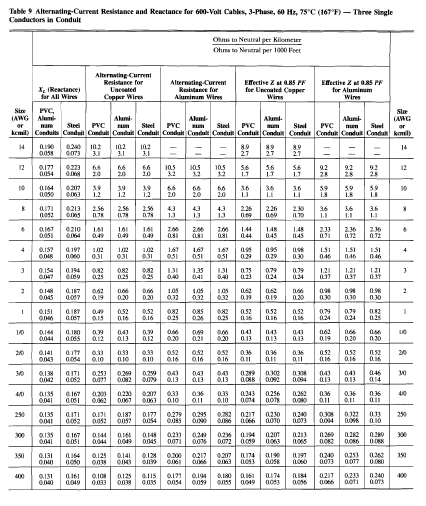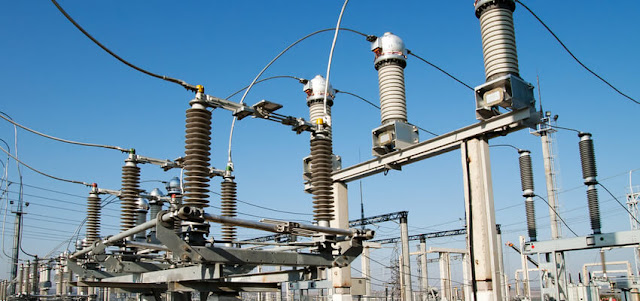Types and Classes of Current Transformer Used in Protective Relaying
 |
| Current Transformer in the Substation | Source |
Generally, there are three different types of CTs:
- High remanence type CT
- Low remanence type CT
- Non remanence type CT
The behavior of CTs according to different standards but belonging to the same type is in principle the same.
High remanence CTs
The high remanence type has no given limit for the remanent flux. The CT has a magnetic core without any air gaps and the remanent flux might remain for almost infinite time. The remanent flux can be up to 70-80% of the saturation flux. Typical examples of high remanent type CTs are class P, PX, TPS, TPX according to IEC 60044 and non-gapped class C according to ANSI/IEEE. 3.2
Low remanence CTs
The low remanence type has a specified limit for the remanent flux. The magnetic core is provided with small air gaps to reduce the remanent flux to a level that does not exceed 10% of the saturation flux. Examples are class TPY according to IEC 60044-6 and class PR according to IEC 60044-1. 3.3
Non remanence CTs
The non remanence type CT has practically negligible level of remanent flux. The magnetic core has relatively large air gaps in order to reduce the secondary time constant of the CT (to lower the needed transient factor) which also reduces the remanent flux to practically zero level. An example is class TPZ according to IEC 60044-6.
Read: What are the Conditions in Selecting Current Transformer in Protective Relaying
Current Transformer Standards
The behaviour of inductive CTs in accordance with IEC 60044-1 and IEEE C57.13 is specified for steady state symmetrical AC currents. The more recent standard IEC 60044-6 is the only standard that specifies the performance of inductive CTs (classes TPX, TPY and TPZ) for currents containing exponentially decaying DC components of defined time constant. This section summarises the various classes of CTs.
IEC 60044-1
Class P
Class P current transformers are typically used for general applications, such as overcurrent protection, where a secondary accuracy limit greatly in excess of the value to cause relay operation serves no useful purpose. Therefore a rated accuracy limit of 5 will usually be adequate.
"When relays, such as instantaneous ‘high set’ overcurrent relays, are set to operate at high values of overcurrent, say 5 to 15 times the rated current of the transformer, the accuracy limit factor must be at least as high as the value of the setting current used in order to ensure fast relay operation."
Rated output burdens higher than 15VA and rated accuracy limit factors higher than 10 are not recommended for general purposes. It is possible, however, to combine a higher rated accuracy limit factor with a lower rated output and vice versa. When the product of these two exceeds 150, the resulting current transformer may be uneconomical and/or of unduly large dimensions.
 |
| Characteristics of Class P CTs |
Class PR
A current transformer with less than 10% remanence factor due to small air gaps for which, in some cases, a value of the secondary loop time constant and/or a limiting value of the winding resistance may also be specified.
Class PX
A current transformer of low leakage reactance for which knowledge of the transformer secondary excitation characteristic, secondary winding resistance, secondary burden resistance and turns ratio is sufficient to assess its performance in relation to the protective relay system with which it is to be used.
Class PX is the definition in IEC 60044-1 for the quasi-transient current transformers formerly covered by class X of BS 3938, commonly used with unit protection schemes.
Class PX type CTs are used for high impedance circulating current protection and are also suitable for most other protection schemes.
IEC 60044-6
Class TPS
Protection current transformers specified in terms of complying with class TPS are generally applied to unit systems where balancing of outputs from each end of the protected plant is vital. This balance, or stability during through fault conditions, is essentially of a transient nature and thus the extent of the unsaturated (or linear) zones is of paramount importance.
"It is normal to derive, from heavy current test results, a formula stating the lowest permissible value of Vk if stable operation is to be guaranteed".
The performance of class TPS current transformers of the low (secondary) reactance type is defined by IEC 60044-6 for transient performance. In short, they shall be specified in terms of each of the following characteristics:
- Rated primary current
- Turns ratio (the error in turns ratio shall not exceed ±0.25%)
- Secondary limiting voltage
- Resistance of secondary winding
Class TPZ
For class TPZ CTs the remanent flux is practically negligible due to large air gaps in the core. These air gaps also minimise the influence of the DC component from the primary fault current, but reduce the measuring accuracy in the unsaturated (linear) region of operation.
The accuracy limit is defined by peak instantaneous alternating current component error during single energization with maximum DC offset at specified secondary loop time constant.
Class TPZ CTs are typically used for special applications such as differential protection of large generators.
EEE C57.13
Class C
The CT design is identical to IEC class 10P but the rating is specified differently. Refer to Appendix B for equivalent ratings and conversion formulae between IEC and IEEE classifications.
Reference:
- Burdens & Current Transformer Requirements of MiCOM Relays | Download
- Publisher: AREVA

.webp)











Any offset current coursing through a high impedance gadget will make an undesirable voltage show up across the gadget, adding to the voltage estimation.عالية الجهد مكثف السيراميك
ReplyDeleteTeachers make learning exciting. enneagram of personality
ReplyDelete